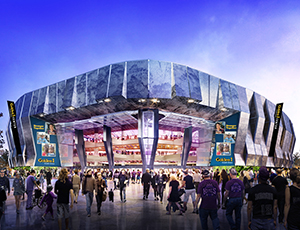
For the past 15 years, the U.S. Green Building Council's Leadership in Energy & Environmental Design standards has been the touchstone for sustainable design and construction.
But the 2009 LEED version 3 continues to be the go-to guide for green design as clients hold off on pursuing the more stringent LEED version 4 standards until they become mandatory in 2016.
So designers are beginning to seek new outlets the exercise their creativity in green design.
There is no lack of interest in green design, as can be seen in in the results of ENR’s Top 100 Green Design Firms list. As a group, the Top 100 generated $5.21 billion in design revenue in 2014 from projects registered with and actively seeking certification from third-party ratings groups under objective sustainable-design standards, such as LEED standards. For the group, this revenue is a 10.1% increase from the $4.73 billion in 2013.
Domestically, green design revenue rose 5.8%, to $4.11 billion, in 2014 from $3.88 billion in 2013. The Top 100 had $1.10 billion in revenue from green projects outside the U.S. in 2014, up 18.2% from $855.1 million in 2013.
However, many designers say that the profession is looking for new methods and standards to jump-start the sustainable building market. "I feel that the sustainable design movement has hit a plateau. LEED, for better or worse, doesn’t cause the same excitement that it used to and it seems we are waiting for the next BIG catalyst to happen," says Susan King, principal at Harley Ellis Devereaux.
King says the answer to “what’s next?” or “what’s beyond” LEED Platinum may be the Living Building Challenge from the Seattle-based International Living Future Institute. But the Living Building Challenge has not yet gained the market momentum that LEED had a decade ago, she says.
Many designers are feeling restless for the next step in sustainability. "We haven’t seen new programs and tools like the Health Product Declaration, Living Building Challenge, or LEED v4. Even the Living Product Challenge, which would have been quite shocking several years ago, seems like a logical next step today," says Russell Perry, co-director of sustainability, SmithGroupJJR.
One reason many designers are becoming restless is that many green building standards that were seen as cutting edge just a few years ago now are being adopted in energy codes and regulation. "The things we used to fight for, like continuous insulation and better high performing building envelopes in general, are required now," says King. This allows designers to focus on new issues, such as material content with the end goal of healthier products, she says.


Post a comment to this article
Report Abusive Comment